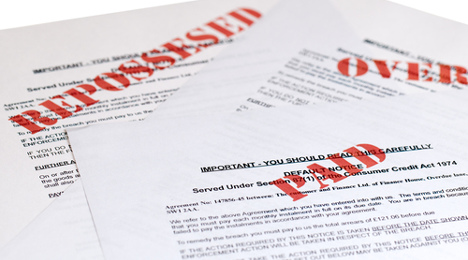S&P/Experian: Rising Sales Pushes Default Uptick Drift

The upward drift surfacing in the auto loan segment of the S&P/Experian Consumer Credit Default Indices is now six months old, but analysts are attributing the movement to the amount of metal moving out of showrooms and paper filling finance company portfolios during the same span.
The October reading ticked up 4 basis points on a sequential basis to land at 1.05 percent. The level still is just 12 basis points higher than the all-time low established back in May.
And want more perspective? The auto loan default rate back in December 2009 when the Great Recession still choked economic growth stood at a point more than double the current level — 2.67 percent.
With vehicle sales at a brisk pace — and certified pre-owned turns setting records — it didn’t come as a surprise to report orchestrators that auto loan defaults are on a slight rising trend.
“The continued six-month upward trend in auto loan default rates does coincide with strong automobile sales over the same period,” said David Blitzer, managing director and chairman of the index committee for S&P Dow Jones Indices.
Meanwhile, analysts indicated that data through October showed the national composite rate — the comprehensive measure of changes in consumer credit defaults — ticked up two basis points from September to 1.06 percent.
Elsewhere, the first mortgage default rate rose for the third consecutive month, coming in at 0.96 percent in October. Despite that segment’s rise, the second mortgage default rate declined to 0.47 percent.
The bank card rate continued its decline for the fourth consecutive month, dipping by 3 basis points to a historical low of 2.60 percent.
“With the continued increase in the composite default rates, the overall movements have still been very small,” Blitzer said.
“Despite the small increases in default rates, bank card and second mortgage default rates are currently at historical lows,” he continued. “Even with the increases, default rates are still much lower from their October 2013 rates.”
Looking at the data from the five largest metropolitan areas, analysts noticed Dallas, Los Angeles and Miami all reported rate increases.
In fact, Dallas’ default rate came in at 0.98 percent, the highest rate for the Metroplex since March.
Analysts noted Miami registered its first default rate increase since last December as the October reading climbed 5 basis points from September to 1.26 percent.
S&P and Experian found that Los Angeles continued its default rate increase for the third consecutive month, posting a rate of 0.84 percent, up 7 basis points from September.
New York however, for the third straight month, registered a 6-basis-point decrease to a historical low of 0.99 percent.
“Despite the recent trend of composite rate increases, all five cities — Chicago, Dallas, Los Angeles, Miami and New York — still remain below default rates seen a year ago,” Blitzer said.
Jointly developed by S&P Indices and Experian, Blitzer reiterated the S&P/Experian Consumer Credit Default Indices are published monthly with the intent to accurately track the default experience of consumer balances in four key loan categories: auto, bankcard, first mortgage lien and second mortgage lien.
The indices are calculated based on data extracted from Experian’s consumer credit database. This database is populated with individual consumer loan and payment data submitted by lenders to Experian every month.
Experian’s base of data contributors includes leading banks and mortgage companies and covers approximately $11 trillion in outstanding loans sourced from 11,500 lenders.

 View The Latest Edition
View The Latest Edition

